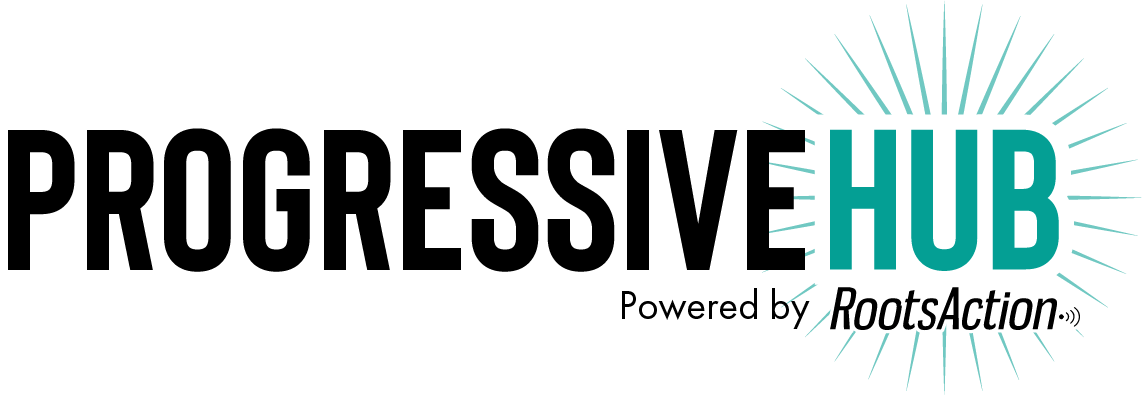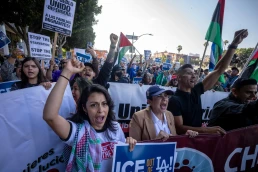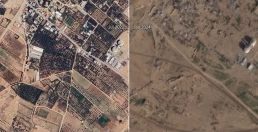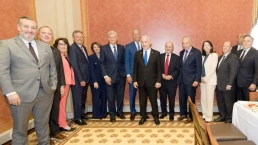Trump promises a deal by mid-June, but many obstacles remain.
By Tarique Niazi, Foreign Policy In Focus
The second round of Iran-U.S. talks on April 19 has successfully concluded in Italy. The Omani embassy in Rome hosted the talks, which went on twice as long as those held in Oman on April 12. Most importantly, Iran and the United States have agreed to a third round of discussions on April 26. Before this third round there will be a meeting of experts from both countries to discuss nuclear de-escalation, uranium enrichment, verification mechanisms, and the lifting of economic sanctions.
Oman’s Foreign Ministry said in a statement that both sides agreed to ensure that Iran is “completely free of nuclear weapons and sanctions, and maintaining its ability to develop peaceful nuclear energy.”
This second round was preceded by intense rhetoric on both sides. Iran’s supreme leader deflated the hopes of success in the talks, while President Trump’s Special Envoy Steve Witkoff asked Iran to “dismantle” a nuclear program that it considers its red line.
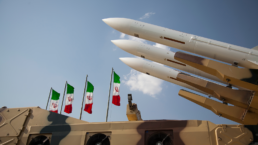
The talks did not, however, reach a dead end. It is common for negotiators to take maximalist positions to appease different constituencies before they even sit around the negotiating table. The first round of Iran-U.S. talks already defied gloomy predictions when it successfully took place on April 12 in Muscat, Oman. The host Sayyid Badr al Busaidi, Oman’s foreign minister, treated both Iranian and U.S. delegations at his residence to the centuries-old Arab tradition of hospitality.
Seated in separate rooms in the minister’s house, the delegates conducted four rounds of talks. As a go-between, al Busaidi delivered and redelivered communications that lasted two-and-a-half hours. In the Iran-U.S. context, the duration of communication is of special significance. Two estranged nations, talking to each other through an intermediary, would not have communicated that long had they not found common ground. Also, they agreed to communicate in writing, which allowed both sides to read, unfiltered, each other’s intents and purposes. To avert the pitfalls of mistranslation, both sides consented to converse and write in English.
At the end of the talks, the hosts were overjoyed, both delegations were all smiles, and Tehran and Washington echoed each other in describing the talks as “positive” and “constructive.” As a further indication of progress, both delegations agreed to the second round of talks. Most important of all, the Iranian delegation and its leader Abbas Araghchi, Iran’s foreign minister, broke an almost 50-year-old taboo by exchanging greetings with the U.S. delegation and its leader Steve Witkoff.
Recent Posts
What To Do When You See ICE In Your Neighborhood
July 14, 2025
Take Action Now How can you deter the Trump administration’s immigrant deportation machine when it pops up in your community? Follow these…
ICE Campaign Of Violence Will Lead To More Deaths
July 14, 2025
Take Action Now Jaime Alanis’s death shows the horrific consequences of a secret police force behaving with utter impunity.By Natasha Lennard, The…
Hague Group: “Concrete Measures” or Sack of Cement? Will It Move to Sanctions, Peace Force and Ensuring Aid to Gaza?
July 13, 2025
Take Action Now Will the meeting in Colombia be a coalescence of global opinion driving states to just action — or just more rhetoric from various…
Why Are Democratic Lawmakers Still Meeting With Netanyahu?
July 12, 2025
Take Action Now Pictures show Democrats like Chuck Schumer standing next to Netanyahu, smiling.By Sharon Zhang, Truthout A bipartisan group of…
